Abstract
1. Contrast flash technique allows the rod threshold to be measured even when it lies far above the cone threshold. In this way the rod dark adaptation curve after rhodopsin bleaching can be measured over 6 log units.
2. By retinal densitometry the regeneration of rhodopsin can be measured in the same subject. It is found that the log threshold is raised 1·2 units for each 10% of rhodopsin in the bleached state.
3. We have tried to discover whether bleaching raises the threshold by desensitizing the rods, or (like backgrounds) by attenuating their signals. Neither suggestion satisfies all conditions.
4. All are satisfied by [Formula: see text], where N is the size of rod signal, constant for threshold; θ, θD are steady backgrounds of light and receptor noise; ϕ is the threshold flash with σ a constant of about 2·5 log td sec; B the fraction of pigment in the bleached state.
Full text
PDF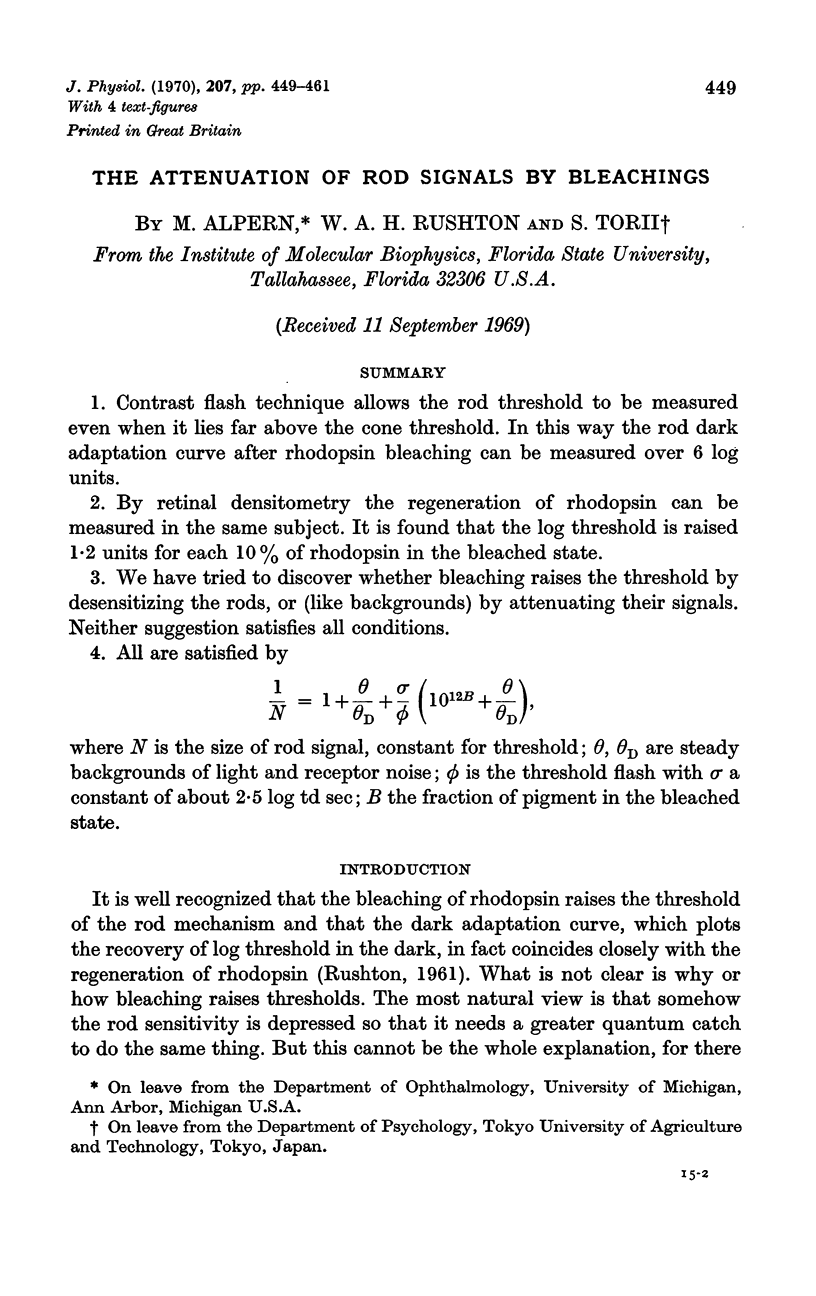
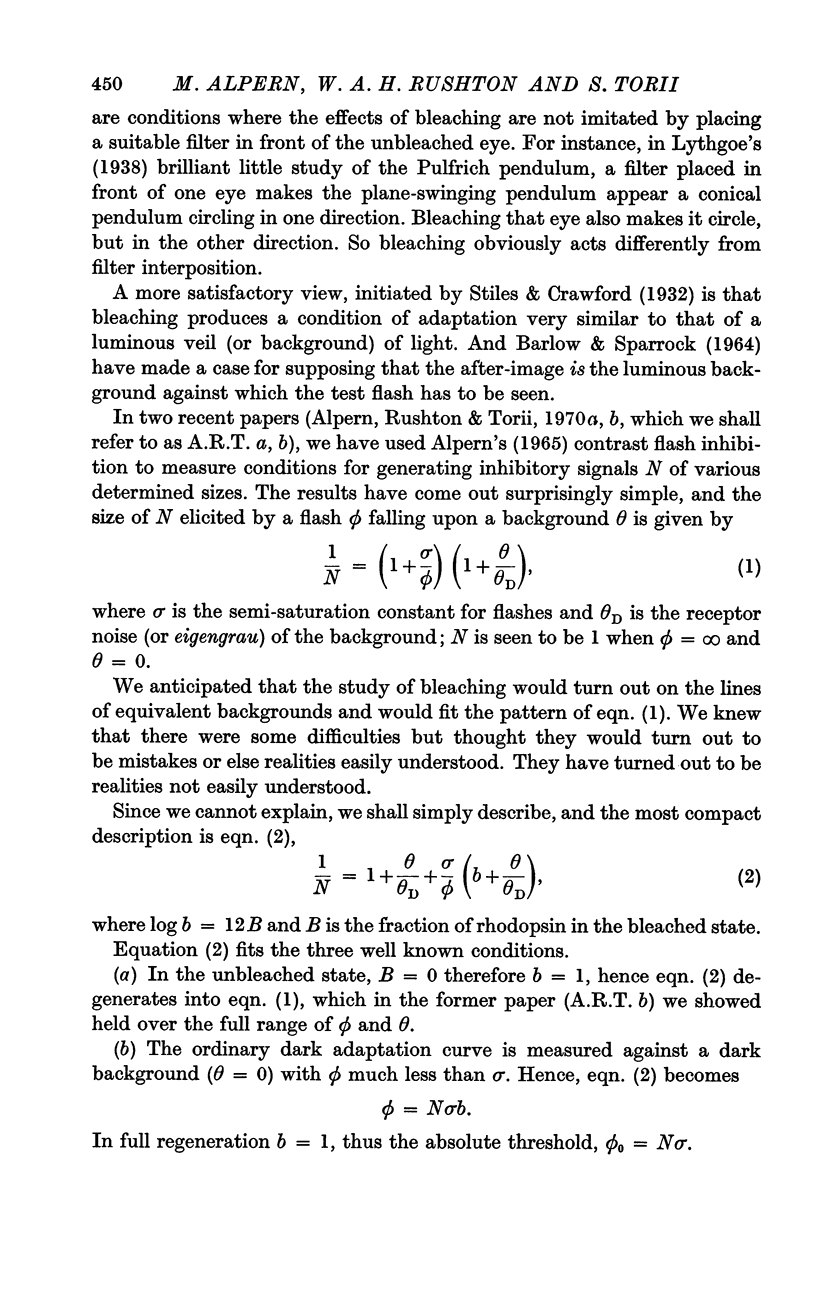
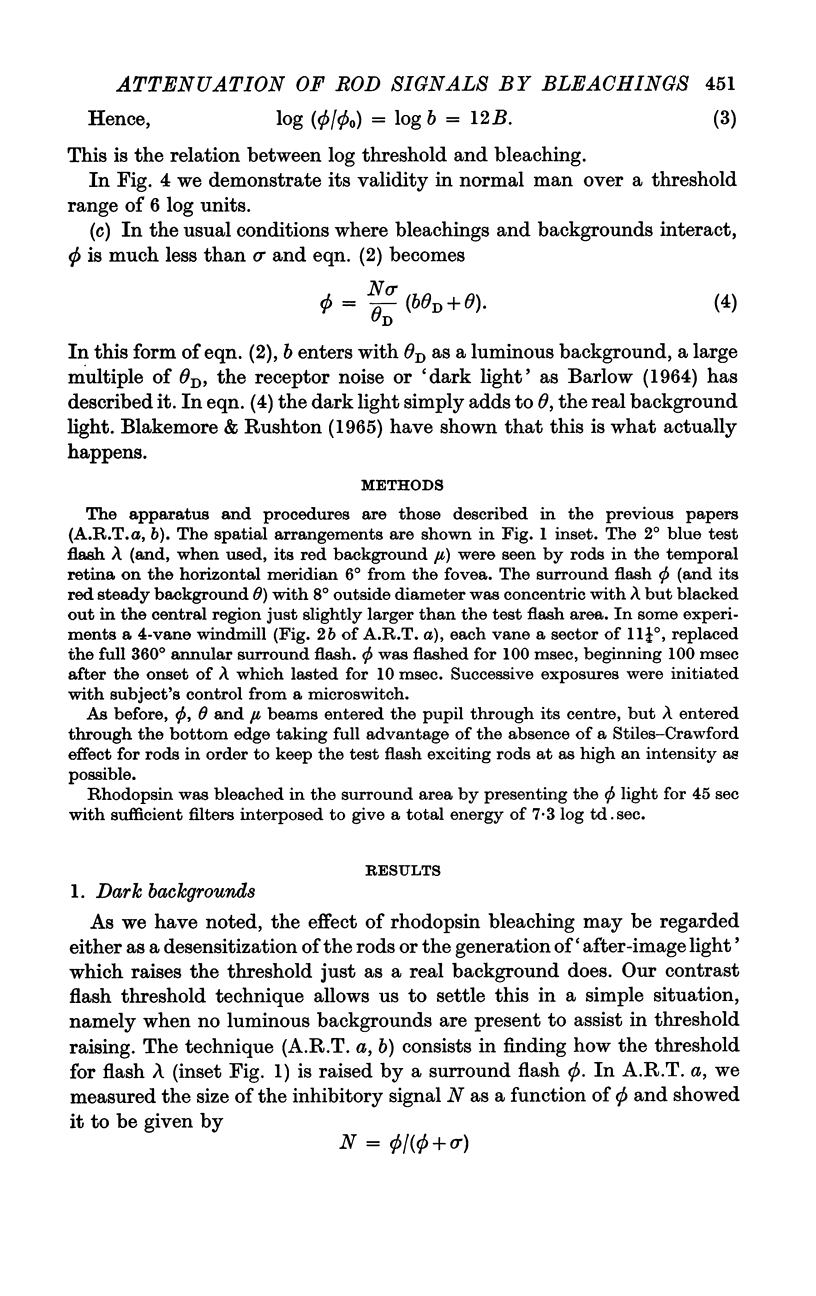
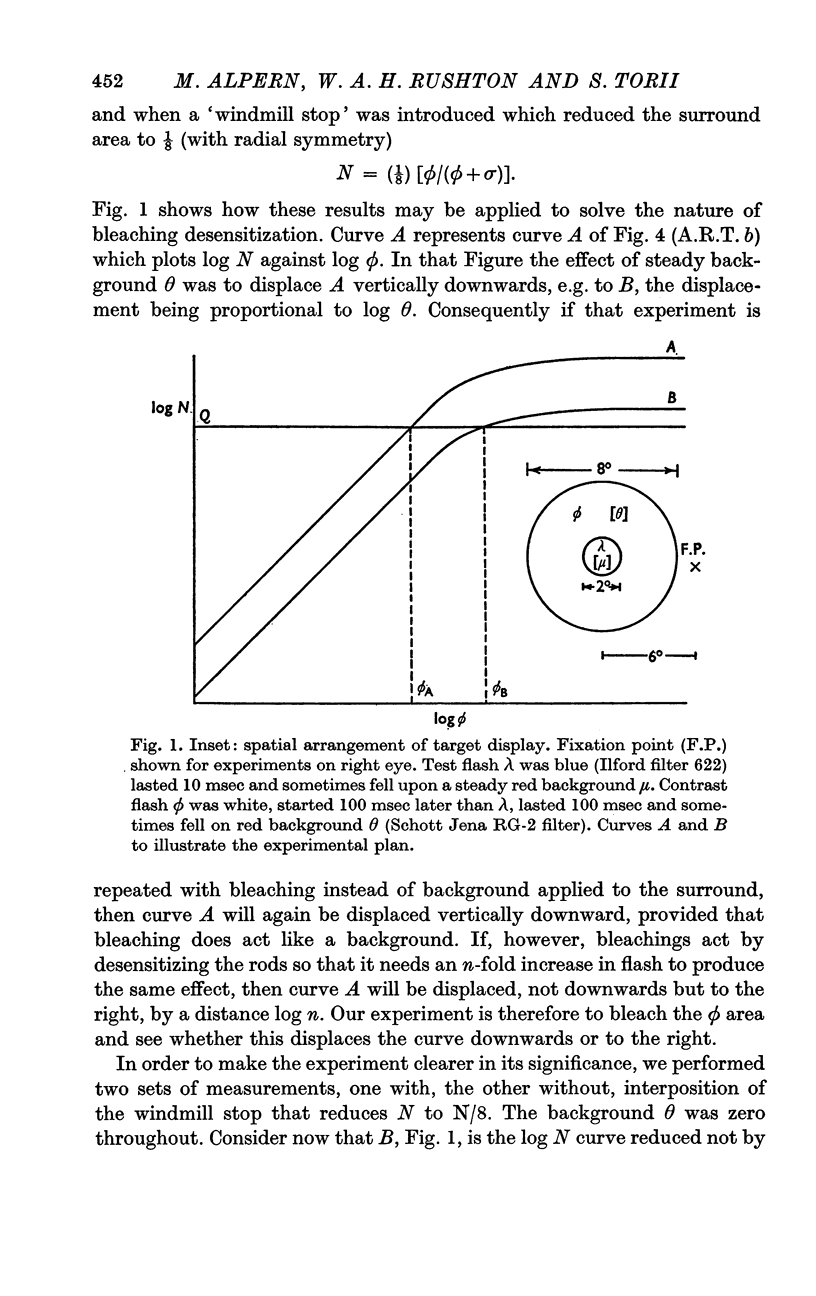
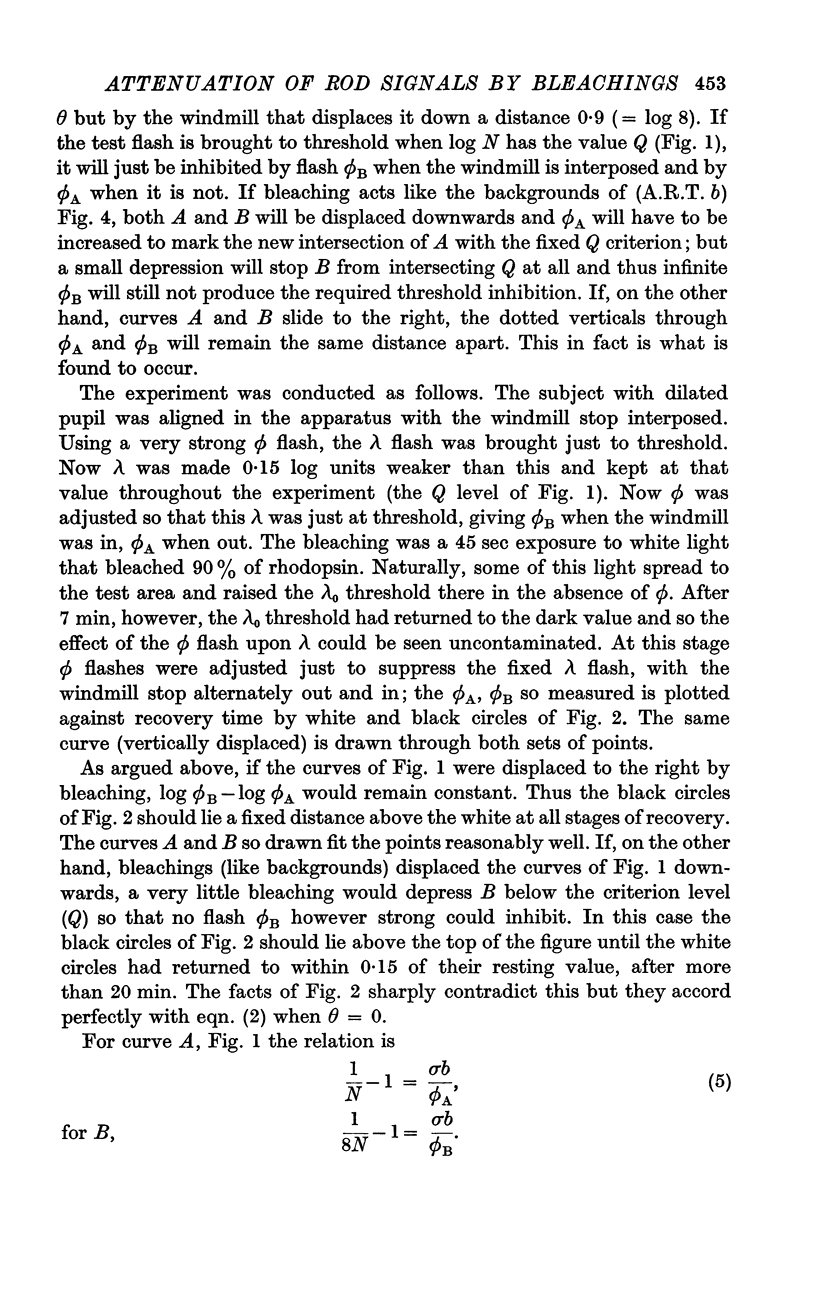
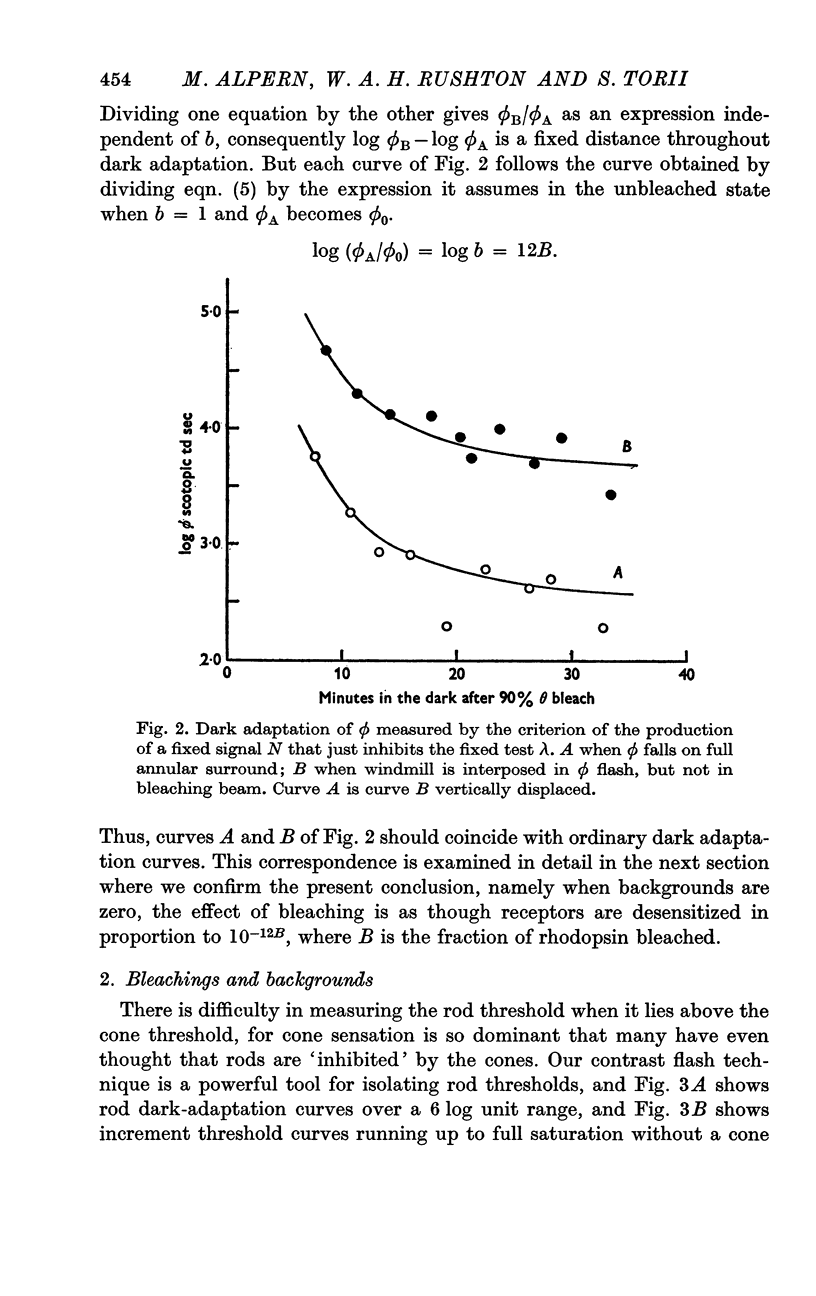
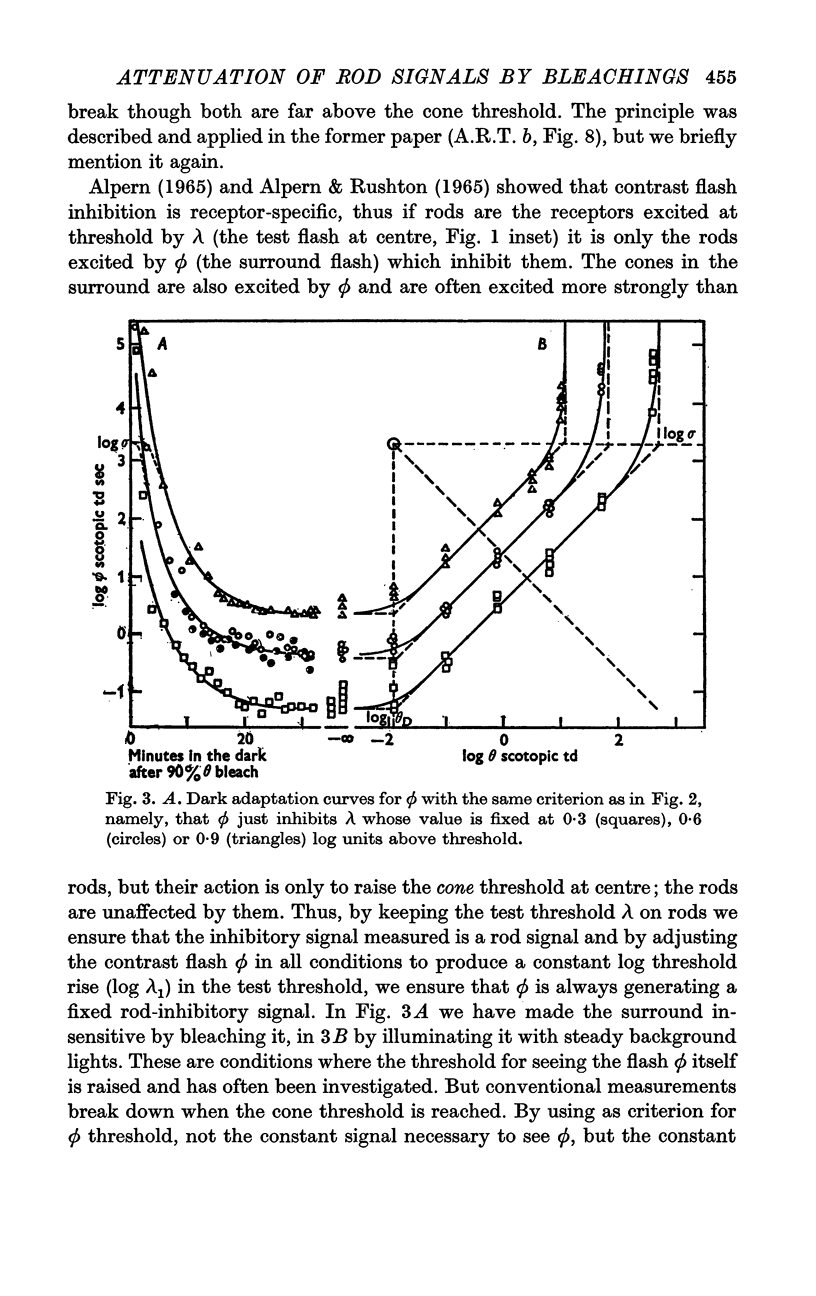
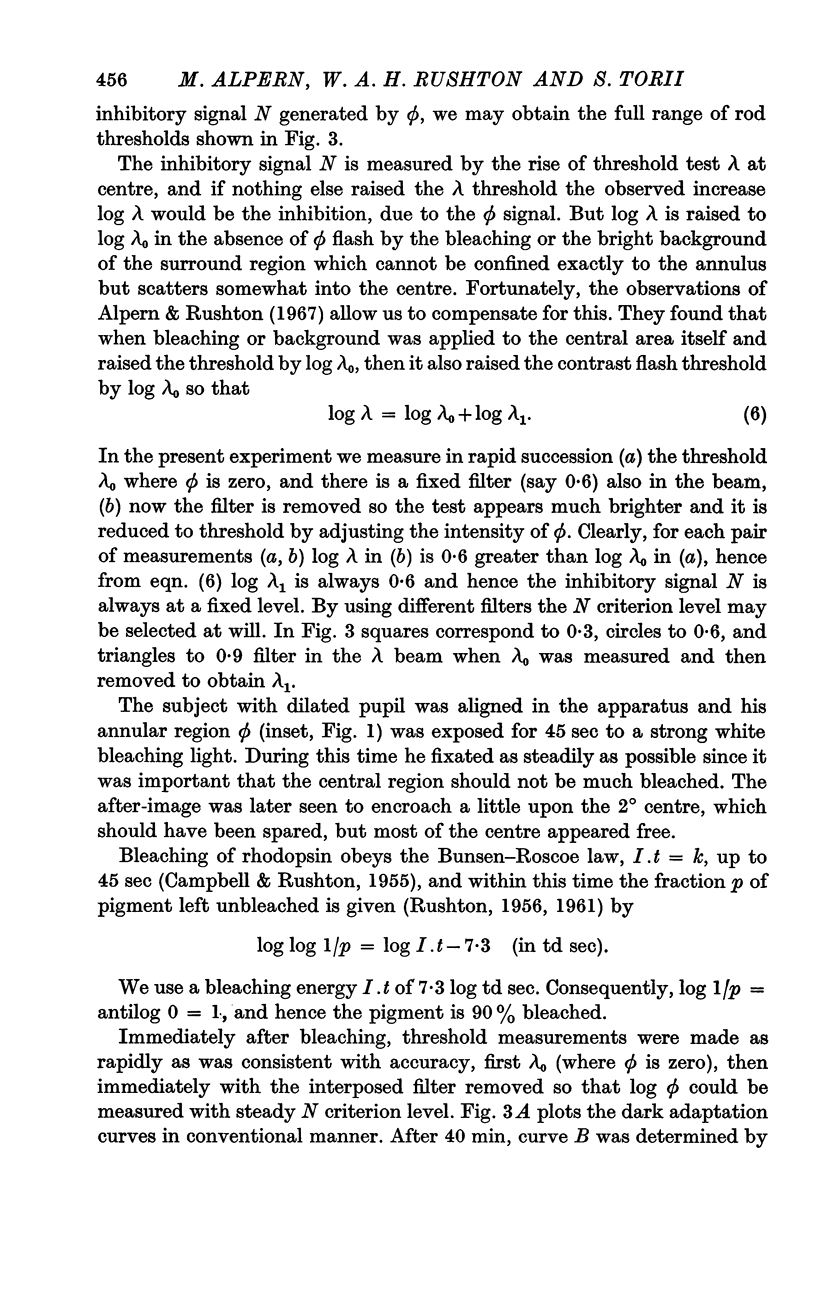
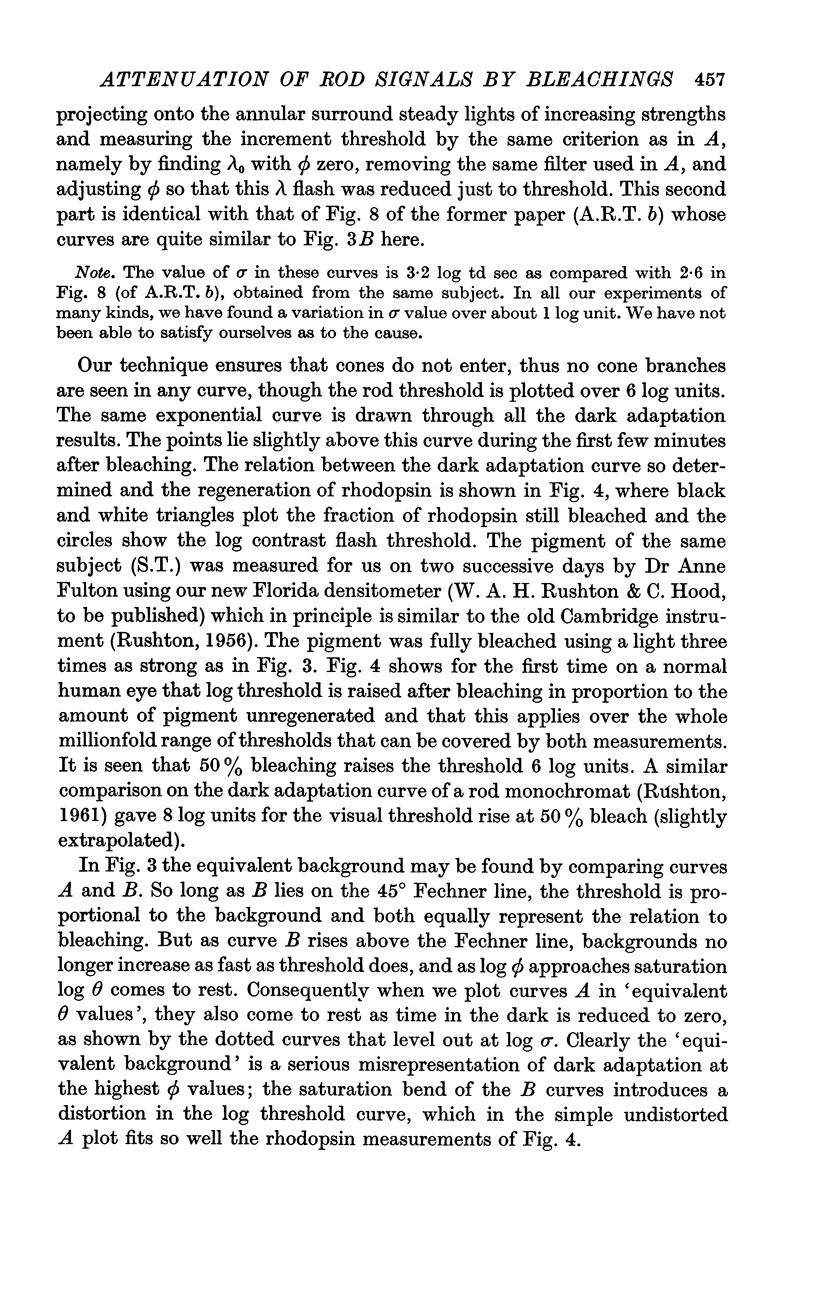
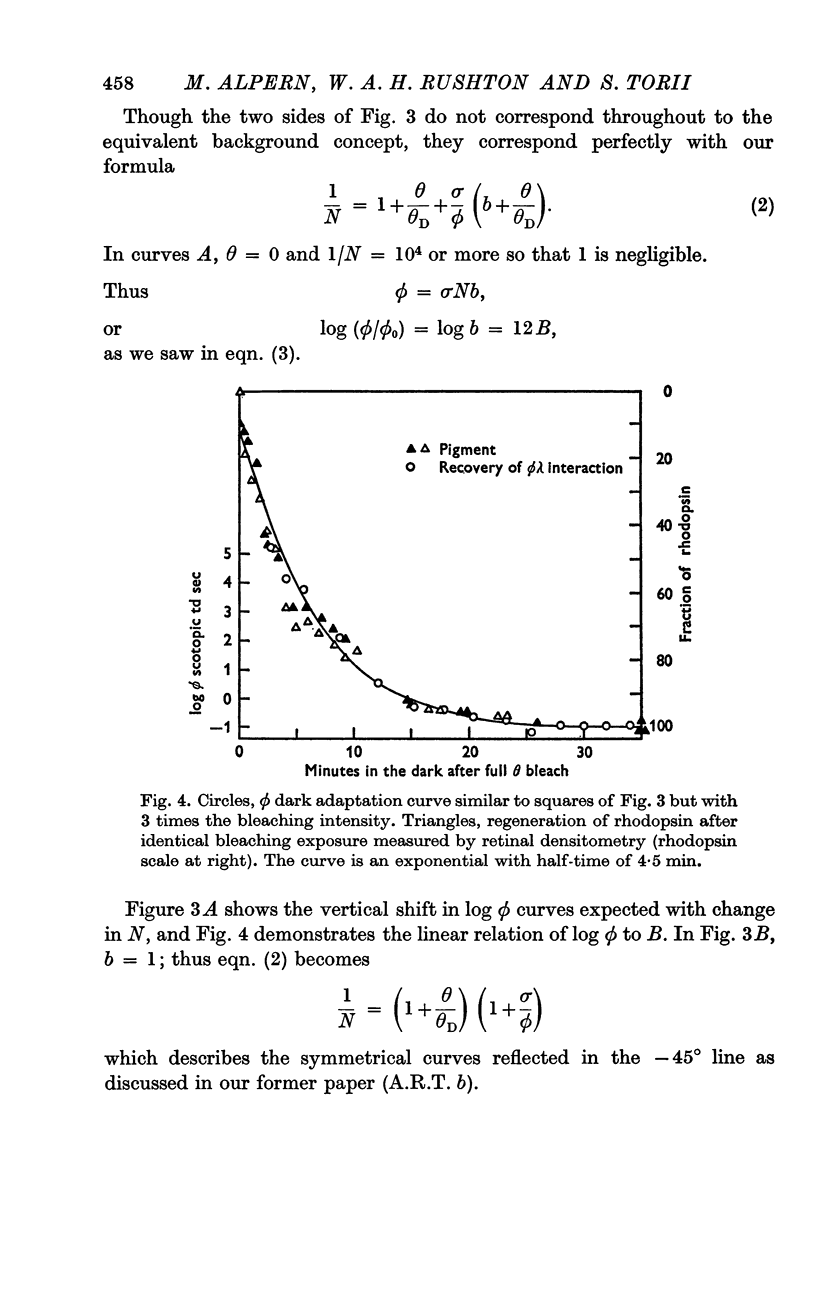
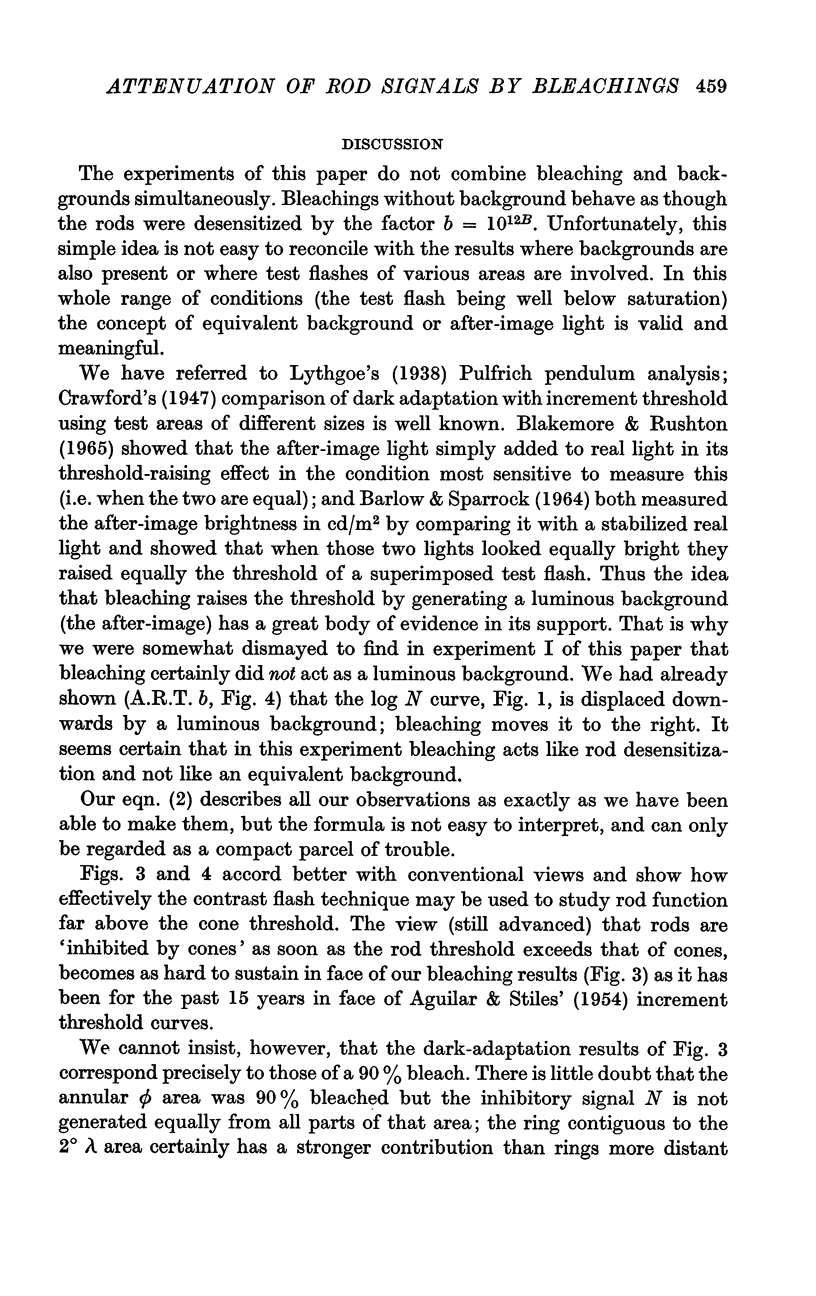
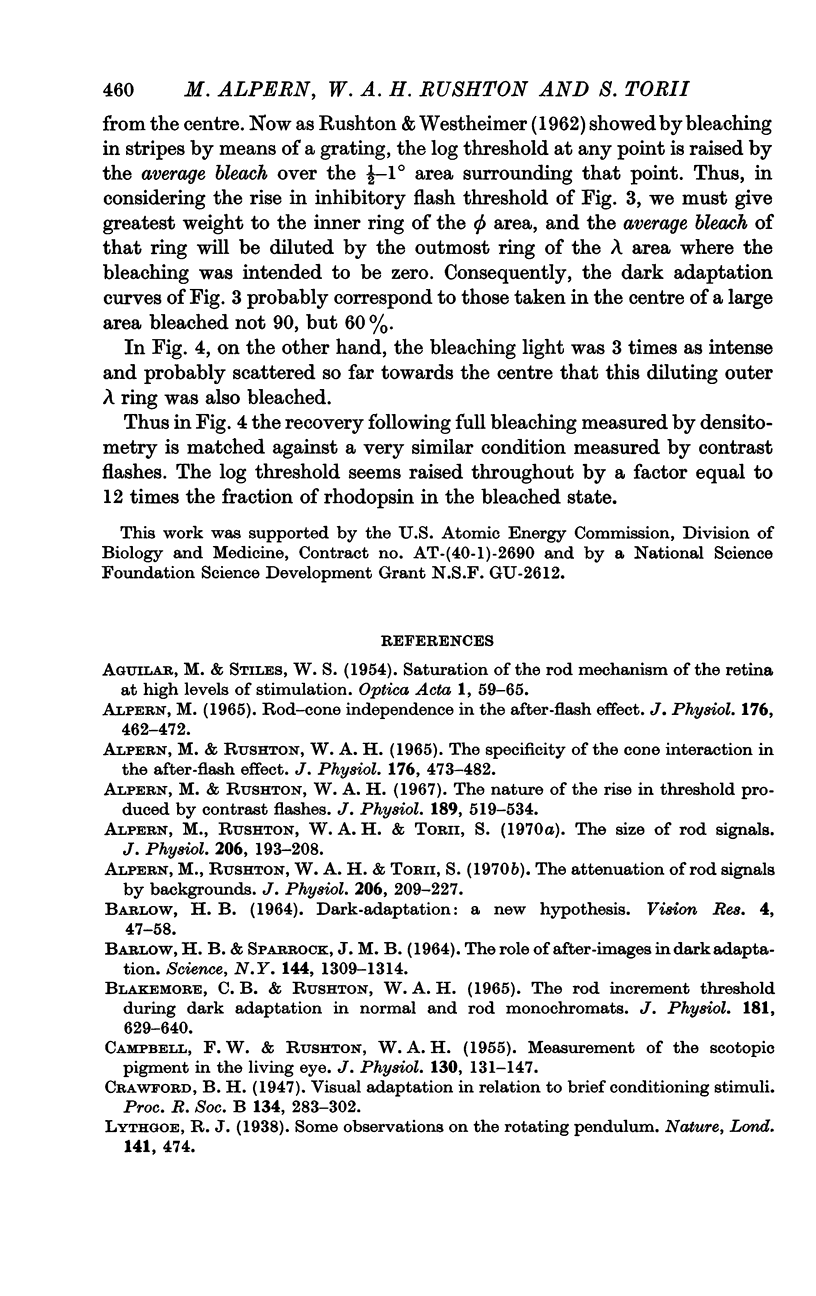
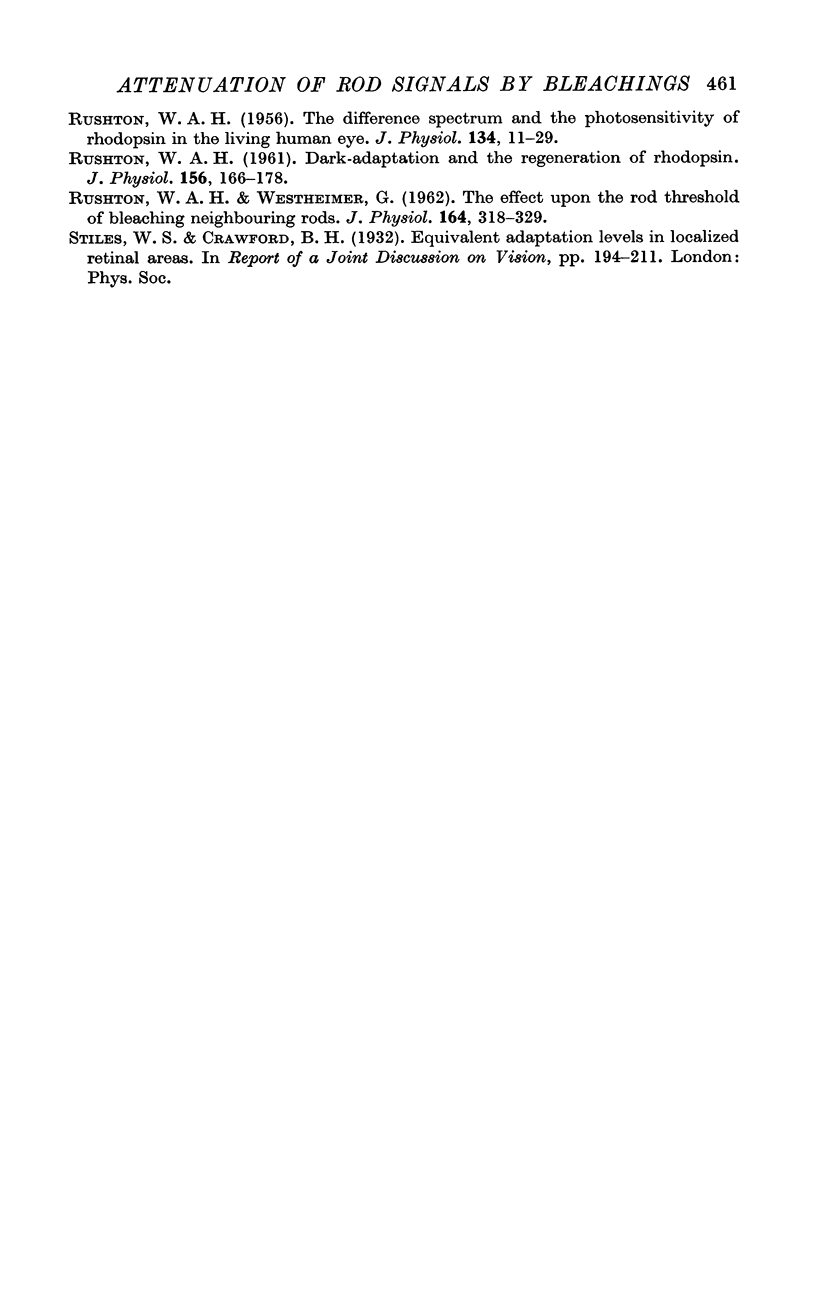
Selected References
These references are in PubMed. This may not be the complete list of references from this article.
- ALPERN M. ROD-CONE INDEPENDENCE IN THE AFTER-FLASH EFFECT. J Physiol. 1965 Feb;176:462–472. doi: 10.1113/jphysiol.1965.sp007561. [DOI] [PMC free article] [PubMed] [Google Scholar]
- ALPERN M., RUSHTON W. A. THE SPECIFICITY OF THE CONE INTERACTION IN THE AFTER-FLASH EFFECT. J Physiol. 1965 Feb;176:473–482. doi: 10.1113/jphysiol.1965.sp007562. [DOI] [PMC free article] [PubMed] [Google Scholar]
- Alpern M., Rushton W. A. The nature of rise in threshold produced by contrast-flashes. J Physiol. 1967 Apr;189(3):519–534. doi: 10.1113/jphysiol.1967.sp008182. [DOI] [PMC free article] [PubMed] [Google Scholar]
- Alpern M., Rushton W. A., Torii S. The attenuation of rod signals by backgrounds. J Physiol. 1970 Jan;206(1):209–227. doi: 10.1113/jphysiol.1970.sp009007. [DOI] [PMC free article] [PubMed] [Google Scholar]
- Alpern M., Rushton W. A., Torii S. The size of rod signals. J Physiol. 1970 Jan;206(1):193–208. doi: 10.1113/jphysiol.1970.sp009006. [DOI] [PMC free article] [PubMed] [Google Scholar]
- BARLOW H. B., SPARROCK J. M. THE ROLE OF AFTERIMAGES IN DARK ADAPTATION. Science. 1964 Jun 12;144(3624):1309–1314. doi: 10.1126/science.144.3624.1309. [DOI] [PubMed] [Google Scholar]
- Barlow H. B. Dark-adaptation: a new hypothesis. Vision Res. 1964 May;4(1):47–58. doi: 10.1016/0042-6989(64)90031-8. [DOI] [PubMed] [Google Scholar]
- Blakemore C. B., Rushton W. A. The rod increment threshold during dark adaptation in normal and rod monochromat. J Physiol. 1965 Dec;181(3):629–640. doi: 10.1113/jphysiol.1965.sp007787. [DOI] [PMC free article] [PubMed] [Google Scholar]
- CAMPBELL F. W., RUSHTON W. A. Measurement of the scotopic pigment in the living human eye. J Physiol. 1955 Oct 28;130(1):131–147. doi: 10.1113/jphysiol.1955.sp005399. [DOI] [PMC free article] [PubMed] [Google Scholar]
- RUSHTON W. A. Dark-adaptation and the regeneration of rhodopsin. J Physiol. 1961 Apr;156:166–178. doi: 10.1113/jphysiol.1961.sp006666. [DOI] [PMC free article] [PubMed] [Google Scholar]
- RUSHTON W. A. The difference spectrum and the photosensitivity of rhodopsin in the living human eye. J Physiol. 1956 Oct 29;134(1):11–29. doi: 10.1113/jphysiol.1956.sp005622. [DOI] [PMC free article] [PubMed] [Google Scholar]
- RUSHTON W. A., WESTHEIMER G. The effect upon the rod threshold of bleaching neighbouring rods. J Physiol. 1962 Nov;164:318–329. doi: 10.1113/jphysiol.1962.sp007024. [DOI] [PMC free article] [PubMed] [Google Scholar]


